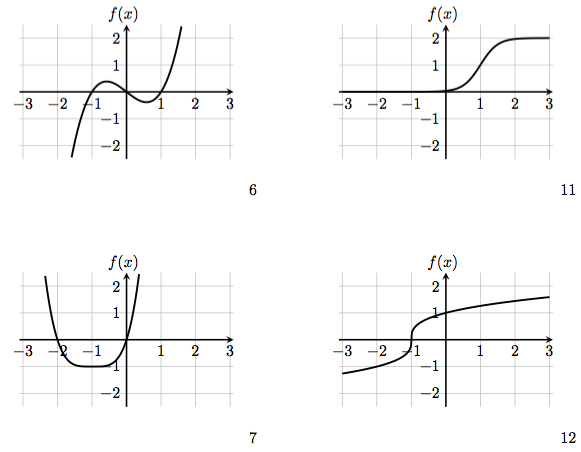Guest Blog by Angie Hodge
This blog is part of our guest blog series. We ask other practitioners of IBL to share some of their ideas and tools so our audience can see what else is happening in the larger world of IBL. Enjoy!
We met Angie Hodge at the 4-day IBL workshop run by Stan Yoshinobu 3 years ago. Besides competing in 100 mile long trail runs (yes, really!) she knows a lot about teaching IBL in calculus and in larger classes (Active Learning Materials for Calculus).
Angie teaches at the University of Nebraska, Omaha. She also co-authors a wonderful IBL blog Math Ed Matters with Dana Ernst.
Angie, we know that you have taught ibl in large classes. What does your large Ibl class look like?
I typically teach Calculus I and Calculus II classes that have 40 students in them. My classroom has white boards on three of the four walls. There are 10 tables that each seat 4 students in the room. I get to class early to put about 4-6 homework problems on the boards. Students select the problems to present on a first come, first serve basis. After student presentations, class either begins with a ![]() TACTivity (tactile learning activity) or a guided IBL worksheet. Most of the time the worksheets are designed so that the students can complete them in the group with no lecture. Sometimes for brand new topics I will give a 5-10 minute mini-lecture or guide them through the basics of the worksheet. The rest of the class is spent with students working problems. They work in their groups on the worksheets or doing the activities while my learning assistant and I constantly walk around the room. We are there to help the students without telling them the answers. We guide their questions and their learning. If there is a common misconception, we bring the students back together for a student presentation. As a class, we discuss the misconception and help them understand the material.
TACTivity (tactile learning activity) or a guided IBL worksheet. Most of the time the worksheets are designed so that the students can complete them in the group with no lecture. Sometimes for brand new topics I will give a 5-10 minute mini-lecture or guide them through the basics of the worksheet. The rest of the class is spent with students working problems. They work in their groups on the worksheets or doing the activities while my learning assistant and I constantly walk around the room. We are there to help the students without telling them the answers. We guide their questions and their learning. If there is a common misconception, we bring the students back together for a student presentation. As a class, we discuss the misconception and help them understand the material.
When I taught calculus to very large classes (~175 students), I did not do full IBL. I instead gave interactive lectures. For example, I would put a problem on the overhead that the students would work on together as they arrived in class. I also gave time for the students to work out examples before presenting them. Some people call this the think-pair-share method. The students were told to work on the examples alone first and then talk to a neighbor. If I was to teach a class this big again, I would definitely do even more IBL in the class. Instead of me presenting the problems, I would have the students present their work to the class. I would also incorporate more TACTivities where the students are engaged in active materials. Although having movable pieces would be difficult in a large class, one could still design worksheets or activities that get the students thinking. My main piece of advice would be that the larger the class gets, the more often you will need to bring the group back together. This helps in making sure students are learning and engaged.
What techniques have you found most helpful? Least helpful?
I have found that the combination of group work and student presentations is very helpful. It gives the students some individual ownership of the material and also lets them collaborate. Collaboration is key for a large group. One or two people teaching the course can’t be at every table at once. However, if group members trust each other and work together, you don’t need to be at every table at once. They learn how to learn and teach each other with you as the guide.
Least helpful is a difficult one… I would say the hardest thing is having a substitute teacher who has a lecture style of teaching. Even though someone who lectures means well (and can be effective in his/her own classroom), my students are used to being engaged during class and get antsy when they have to listen for extended periods of time. Consistency is key!
Which classes have you taught using ibl and for which audiences?
I have taught about 19 different courses using a range of IBL techniques. The classes varied from very large lecture calculus (~175 students) to small mathematics methods courses for future teachers (~5 students). For the last four years, my focus during the academic year has been on first and second semester calculus classes that have approximately 40 students in each section. During the last four summers, I have taught a variety of graduate courses for practicing teachers, third semester calculus, and trigonometry. My summer courses typically had about 30-40 students in them as well.
What are some resources for faculty who want to teach large classes using ibl?
I am working with a colleague at UNO and faculty members from the University of Colorado Boulder on a website that will showcase some of the active learning activities that we have created for pre-calculus through second semester calculus. These materials could be used to make a lecture class “more engaging” or to transform your entire class using IBL. Follow the MathEd Matters blog for a website release day soon!
What is something you are curious or excited about right now in your teaching practice?
I’ve been teaching strictly using IBL since I came to UNO. Many students have now had me for multiple classes, helped out as learning assistants in my classroom, and also have had experiences giving IBL workshops for kids. It’s finally time for some of these students to go into their own 7-12 classrooms. I’m curious to see if they will implement IBL in their classrooms and to what extent they will implement it.


